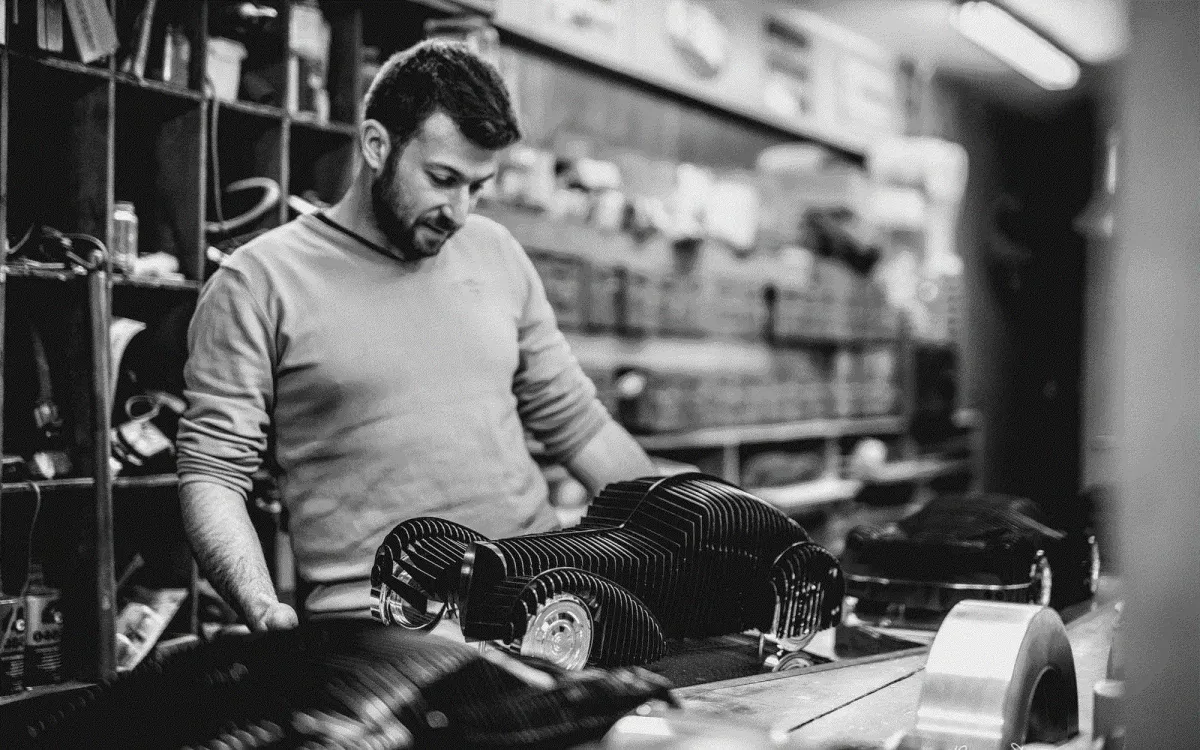The Mercedes 300 SL Tubes by Antoine Dufilho is a unique sculpture that brings together design and innovation. The work depicts an iconic sports car, but in an entirely new, futuristic form. Instead of a smooth surface, the body is composed of round metal tubes. This creates a dynamic play of light, shadow and open space.
The design looks both transparent and solid at the same time. From different angles, the view changes, making movement and speed tangible. This effect refers directly to the essence of the Mercedes 300 SL: elegance, power and progress. Dufilho manages to translate the classic model into a modern art form that is both refined and surprising.
The deep blue hue gives the sculpture a luxurious look. The glossy surface reflects its surroundings and emphasizes the flowing lines. The mirror plate on which the artwork rests reinforces this effect and adds additional depth. This creates an almost floating feeling that underlines the perfection of the design.
This work is not just another object. It is a reinterpretation of automotive history translated into contemporary art. The Mercedes 300 SL Tubes symbolizes the fusion of technology and aesthetics. Moreover, it immediately attracts attention due to its powerful simplicity.
Antoine Dufilho is a French artist and designer who creates sculptures at the intersection of art and technology. With a background in both architecture and medical studies, he developed a unique way of working. He builds vehicles out of layers, patterns or tubes, making movement and speed tangible.
His style is characterized by precision, rhythm and innovation. Each work is carefully constructed and displays a play of transparency and volume. Dufilho always seeks the boundary between past and future, translating classic automotive icons into modern art forms.
His sculptures are exhibited worldwide and are loved by collectors who have a passion for both art and automotive design. With his work, Dufilho shows that technology can become poetry.

Een certificaat van echtheid (COA) is een document van een gezaghebbende bron dat de echtheid van het kunstwerk verifieert. Veel COA’s zijn ondertekend door de kunstenaar, maar andere zijn ondertekend door de vertegenwoordigende galerie of de drukker die samen met de kunstenaar aan het werk heeft gewerkt. Voor werken op de secundaire markt zijn gemachtigde nalatenschappen of stichtingen vaak de uitgevende partij.
COA’s bevatten meestal de naam van de kunstenaar, de details (titel, datum, medium, afmetingen) van het werk in kwestie en waar mogelijk een afbeelding van het werk.